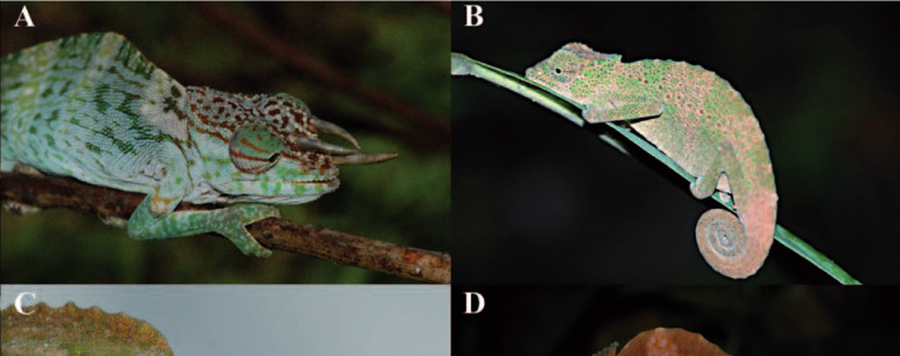
Insights into chameleons of the genus Trioceros (Squamata: Chamaeleonidae) in Cameroon, with a resurrection of Chamaeleon serratus Mertens, 1922
Relationships among chameleons of the genus Trioceros in Cameroon are reviewed on a molecular basis using mitochondrial genes and by morphology. Trioceros oweni is placed basal to two distinct clades (lowland-submontane species vs. submontane-montane species) and its position is discussed due to high genetic differences to the remaining taxa. Within the lowland-submontane species group, distinct subclades with low genetic differences exist within T. montium and T. cristatus. Differing relationships to previously published results are observed within the submontane-montane species group, resulting in taxonomic changes: Trioceros eisentrauti is grouped with the two T. quadricornis subspecies, showing only low genetic differences, which also correlates with the similar overall morphology. The taxon is thus assigned to a subspecific rank: T. quadricornis eisentrauti. Within the wiedersheimi-group, the former southern subspecies is elevated to species rank, Trioceros perreti, and two additional species have been distinguished by molecular and morphological methods in the former nominate taxon. Trioceros wiedersheimi is restricted to northernmost localities, while remaining populations have been assigned to the revalidated taxon Trioceros serratus (Mertens, 1922). Differentiating morphological characters for the three species are provided and a neotype of Chamaeleon serratus Mertens, 1922 is designated and described to ensure clarification of its taxonomic status and type locality.






